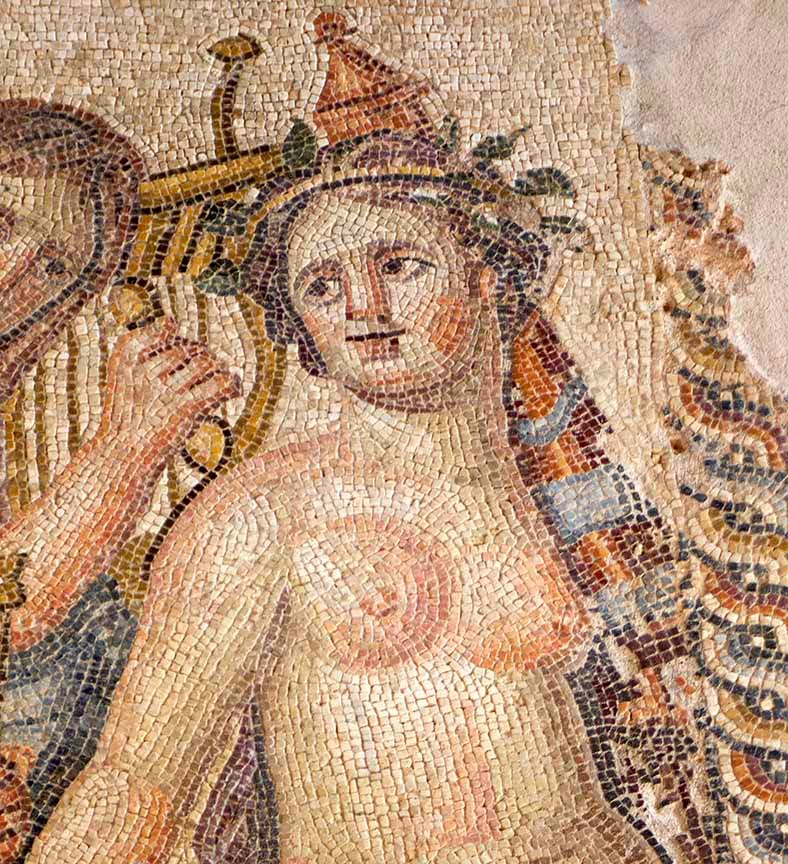In 45 a.d. the Apostle Paul, he of Road to Damascus fame, and Barnabas, later Saint Barnabas, visited Larnaca and appointed Lazarus as the first Christian bishop of Cyprus. From Larnaca Paul and Barnabas proceeded along the southern coast to Paphos, on the western end of Cyprus Island. I decided to follow in their footsteps. First I took the bus forty miles to Limmasol, where as most of you will recall Richard the Lion Heart of England married Berengaria of Navarre on May 12, 1191, and there transferred to a bus going another forty miles to Paphos. By noon I was comfortably ensconced in the Kiniras Guesthouse in Upper Paphos.
Guesthouse where I am staying in Paphos (click on photos for enlargements)
Beefcake dished up at the entrance to the guesthouse restaurant
Patio dining room of the restaurant
Statue in the restaurant of woman displaying her delectable treats
Statue in restaurant of three young women from the Isle of Lesbos.
After a couple of Cyprus coffee bracers I took the bus two miles or so to Nea Paphos, also known as Katos Paphos, which fronts on the sea. From 58 b.c. to 330 a.d. Cyprus was part of the Roman Empire and much of the time Nea Paphos served as the capital of Cyprus and the residence of the Roman proconsul to the island. The proconsul and other important Romans lived in magnificent mansions, many of which had spectacular mosaic floors. Some of the floors have survived to the present day and are now among the main tourist attractions in Paphos. Three of the mansions are located in what is now the Paphos Archeological Park. The first one I visited was the House of Aion, believed to have been built in the early fourth century.
Mosaic floor in the House of Aion
Detail of mosaic floor in the House of Aion
Detail of mosaic floor in the House of Aion
Mosaic floor in the House of Aion
Detail of mosaic floor in the House of Aion
Near the mansions wildflowers grow in profusion
More wildflowers
Still more wildflowers
That evening I had dinner in the restaurant of the Kiniras Guesthouse. The house wine came in an unlabeled bottle. Turns out it was made by the father of the owner of the guesthouse from indigenous Ophalmo grapes. The father owns a small vineyard in the mountains north of Limmasol. I ordered only a glass but the server (who was also the cook) put a bottle on my table and told me to help myself if I wanted more. I can in all honesty say it was one of the best wines I have ever drank.
Mixed Grill at the Kiniras Guesthouse


























